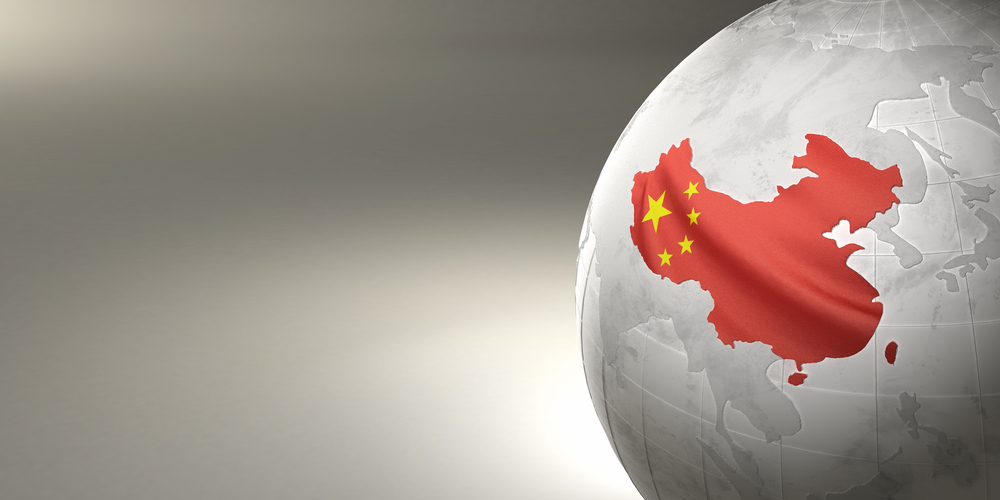Deceleration Expected for Chinese Machinery Production

Machinery production in China this year is forecast to expand by 6.9 percent, the slowest rate since 2012, according to the Chinese Machinery Production Quarterly Tracker report from IHS Inc.
The banking and financial service institution HSBC announced that its December manufacturing purchasing manager index (PMI) amounted to 49.6, the lowest level for the past eight months. NBS also announced a manufacturing PMI index of December at 49.6, its lowest rate in 18 months. The levels show the weakening of manufacturing activities in China.
"China over the past several years has had among the highest growth rates in the world," said Jay Tang, analyst for Asia-Pacific industrial automation at IHS. "With the latest machinery production numbers showing a major deceleration, everyone now must accept that the Chinese economy is shifting to slower growth."
For industrial machine production, IHS maintains a detailed analysis for each machinery type. As Figure 1 shows, some Chinese machinery industries that rely heavily on the investment and export markets were still struggling in 2014 with overcapacity and weak demand. These industries include construction machinery, metal working, mining machinery, paper and paperboard machinery, and textile machinery. More time is needed to solve these problems, IHS believes.
In contrast, some industries serving domestic consumption continued to grow last year. Among these were agricultural machinery, elevators and escalators, electronics and electronics assembly, oil and gas, medical and scientific, food, beverage and tobacco machinery, and packaging machinery.
Production of semiconductor machinery and industrial robots grew the fastest in 2014, thanks to strong demand from consumer electronics, due especially to products from U.S.-based Apple Inc.
Some industries grew because of exceptional circumstances. The wind turbine industry, for instance, grew strongly because of increasing grid-connected power from wind turbines, as well as the impact of decreasing benchmark prices. Meanwhile, production of photovoltaic (PV) manufacturing equipment grew moderately, as the solar industry recovered.
Overall, the Chinese economy will continue to decelerate in the coming quarters because of past excesses and the lack of organic growth.
In particular, the glut in the Chinese housing market and the country's surplus industrial capacity, along with the excesses in lending that financed them, have weighed down the economy and constrained the government from implementing aggressive stimulus policies. And despite the recent easing of house-purchase restriction policies and targeted credit easing for the real estate market, there is continued housing price deflation and a recession in construction.
Such factors suggest a fundamental change in price expectations in the Chinese real estate market. Any increases in growth in recent quarters have been mostly because of the government's targeted, small-scale stimulus.
Even a rebound in exports has been unsteady because of continued weakness in the eurozone and an underwhelming recovery in the United States.
As a result of all these elements, the Chinese economy currently lacks the impetus to generate sustainable organic growth, and a further deceleration in Chinese economic expansion is forecast by IHS in 2015.
Figure 2 presents the annual growth rates for various economic indicators relative to the machinery market in China.
Although economic activity in China remains weak, IHS believes that Beijing will take the appropriate countermeasures if growth is lower than it expects.
At present are some bright spots for Chinese machine builders:
"¢ Continuous development of e-commerce"”China's online retail sales reached $296.6 billion in 2013, surpassing the United States' total sales of $262.5 billion, according to data released by China's Ministry of Commerce. As the new largest e-commerce market in the world, China had 302 million online shoppers with expenditures equal to 7.8 percent of total retail sales of social consumer goods. China Central Television (CCTV), the state-run broadcaster, separately reported that 81 percent of Chinese families shopped online in 2013, with clothing, books, digital products and home appliances being the most popular sales categories.
"¢ "One Belt and One Road""”This term refers to the Silk Road Economic Belt and the Maritime Silk Road of the 21st Century. The Silk Road concept is a strategy for promoting trade and communications in the region. Experts say it will help to resolve China's domestic overcapacity problems while also promoting regional development and cooperation.
"¢ China has approved a vast investment package"”The Chinese government has approved a package of investment plans for infrastructure, worth 10 trillion renminbi (US$1.6 trillion). According to Bloomberg, This package consists of more than 420 projects focusing on multiple areas, including food and waterworks, transportation, environmental protection, health and nursing the aging population, network construction for information, electric power and oil and gas, clean energy, and the security of oil & gas and mineral resources.
The new norm for Chinese machinery production envisions moderate growth in the future but continuous structural adjustment. Machine builders need to find ways to upgrade their products and capabilities, IHS believes.



































